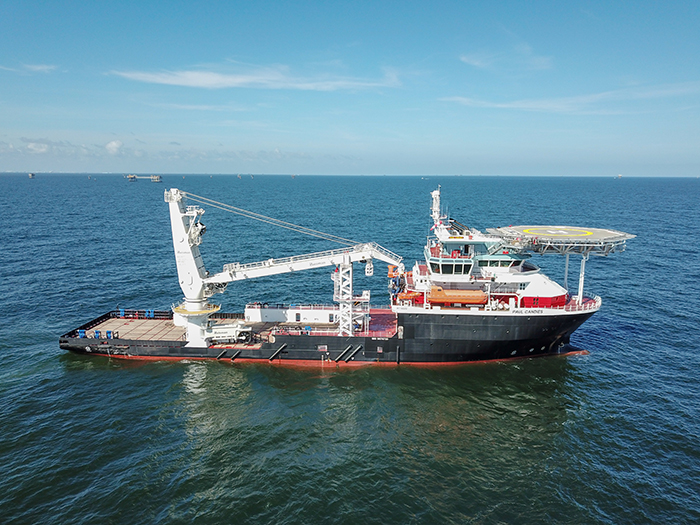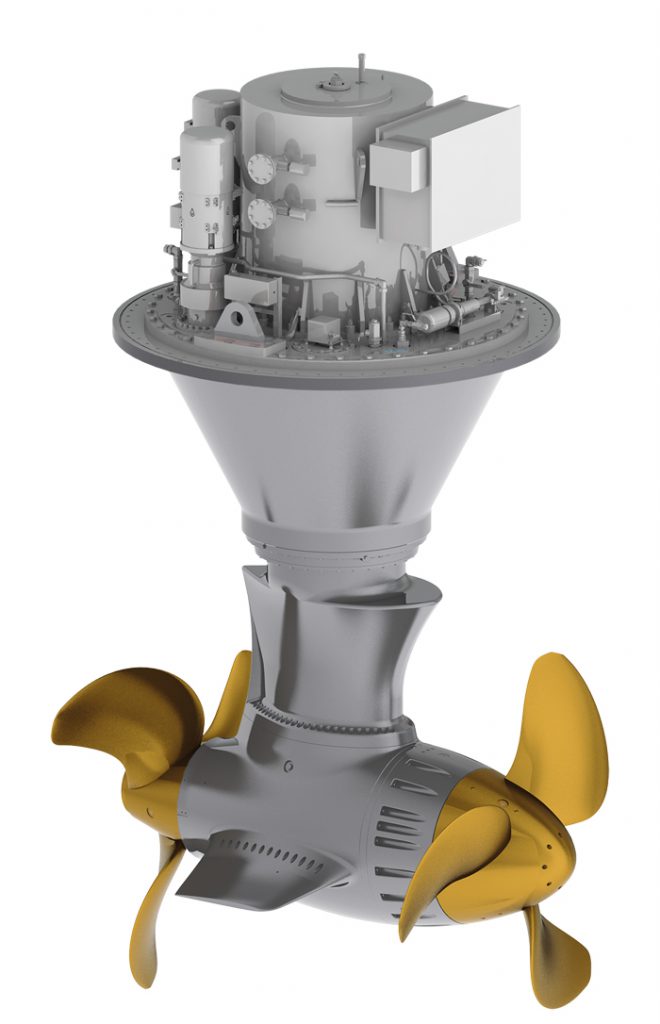
Candies IMR vessel features three Schottel propulsion systems
Written by Nick Blenkey
Paul Candies
The U.S. built, U.S. flagged Inspection Maintenance Repair (IMR) vessel Paul Candies is equipped with three different Schottel propulsion systems.
Owned by Otto Candies, LLC, Des Allemands, La., and built by its Candies Shipbuilders unit, the 101.25 m LOA x 20.6 m beam vessel is powered by four Caterpillar 3516C engines, each rated at 2,250 kW, and one Caterpillar C32 rated at 910 kW. Its two Schottel Combi Drives, two transverse thrusters and one retractable rudderpropeller ensure maximum maneuverability and a high free running speed.
With the two type SCD 560 STP Schottel Combi Drive azimuth thrusters the diesel-electric vessel reaches a speed of 14 knots. The 2,600 kW SCD 560 STP features the proven Schottel twin propeller concept. By sharing the load between two propellers, this concept increases propulsion efficiency and reduces fuel consumption in comparison with single propeller systems.
The two type STT 5 FP bow thrusters (each 1,050 kW) and one 800 kW type SRP 260 R FP retractable bow thruster ensure precise maneuverability in DP mode.
“We have relied on Schottel products for many years. Several of our vessels are equipped with propulsion systems from Schottel – some even with the electric Combi Drive,” says Otto B. Candies III, Vice Chairman, Otto Candies, LLC. “As a result of the very good performance of the azimuth thrusters and the reduced service and maintenance efforts, we have once again decided in favor of Schottel’s Combi Drive.”
Schottel exclusive: Combi Drive
With the SCD L-Drive design principle, the electric motor is integrated vertically into the Rudderpropeller, resulting in a highly efficient variant of the SRP and STP propulsion units. The elimination of the upper gearbox has numerous advantages such as reduced mechanical losses, low noise and vibration levels as well as fewer maintenance requirements. The SCD therefore features a very compact thruster which offers approximately 20 percent space savings compared to Z-Drive installation. This gives additional room for further equipment and fits vessels with limited deck height perfectly.





